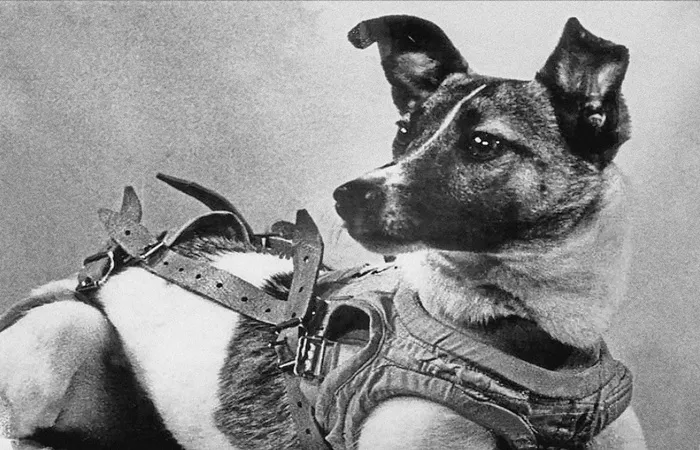Laika, a stray dog in 1950s Moscow, weighed just over 10 pounds and lived in constant fear of the bustling city streets. When a group of Soviet experimenters captured her on a chilly October day in 1957, she had no idea her life was about to take a tragic turn. In just weeks, Laika would be transformed from an abandoned street dog into the first living creature to orbit the Earth, albeit on a mission destined for death.
Laika’s journey into space was set in motion by a group of Soviet scientists eager to test the effects of space travel on living organisms. Chosen for her small size and docile nature, Laika became an expendable subject for an experiment that would ultimately lead to her death. Laika’s mission, aboard Sputnik 2, was not intended to succeed. The scientists behind the launch had already planned for her to perish in space, but Laika’s death came far sooner than they anticipated.
In preparation for the flight, Laika endured extreme confinement and harsh conditions to simulate space travel. She and other dogs in the program were placed in tiny cages for days to acclimate to the cramped environment of the capsule. They were subjected to intense stress, including centrifuge simulations to mimic the forces of launch and exposure to blaring noises, which caused their heart rates to skyrocket. Laika, along with her fellow canine trainees, also underwent surgeries to implant monitoring devices to track their vital signs during the flight.
As the launch date drew near, Laika was chosen over other dogs like Albina. Just days before the mission, Laika’s fate was sealed when physician Vladimir Yazdovsky selected her for the dangerous flight. In a rare moment of kindness, Yazdovsky allowed Laika to play with his children before she was sent to her death. He later expressed regret over his role in the mission, saying, “Laika was quiet and charming… I wanted to do something nice for her: She had so little time left to live.”
On November 3, 1957, Laika was sealed inside Sputnik 2. The tiny capsule was so cramped that she could only sit, lie down, or stand. When the rocket launched, sensors implanted into Laika’s body revealed her heart rate doubled, and her breathing sped up as the craft accelerated into orbit. Laika’s life was short-lived; she died within hours of the launch, from overheating caused by a failure in the spacecraft’s cooling system. The Soviet Union initially claimed that Laika survived for several days, but in 2002, it was revealed that she died mere hours into the mission.
Though Laika’s body was lost when Sputnik 2 disintegrated upon re-entry, she had orbited Earth 2,570 times. Her mission, however, did not go unnoticed. In later years, one of the mission’s key experimenters, Oleg Gazenko, expressed deep regret over the decision to send Laika into space. “The more time passes, the more I’m sorry about it. We shouldn’t have done it,” he said, acknowledging the cruelty behind the mission.
Laika’s tragic story has since become a symbol of humanity’s mistreatment of animals in the name of science. Her suffering sparked a broader conversation about the ethics of animal experimentation, leading to significant shifts in scientific practices. In 1996, PETA successfully campaigned against NASA’s involvement in the Bion space program, which involved painful experiments on monkeys. This victory, along with the National Institutes of Health’s recent decision to reduce funding for animal-based experiments, marks important steps toward more humane alternatives in research.
While Laika’s death remains a heartbreaking reminder of the cruelty animals often face in scientific testing, her legacy lives on as part of the growing movement to end animal experimentation and embrace more ethical, humane methods of research.

